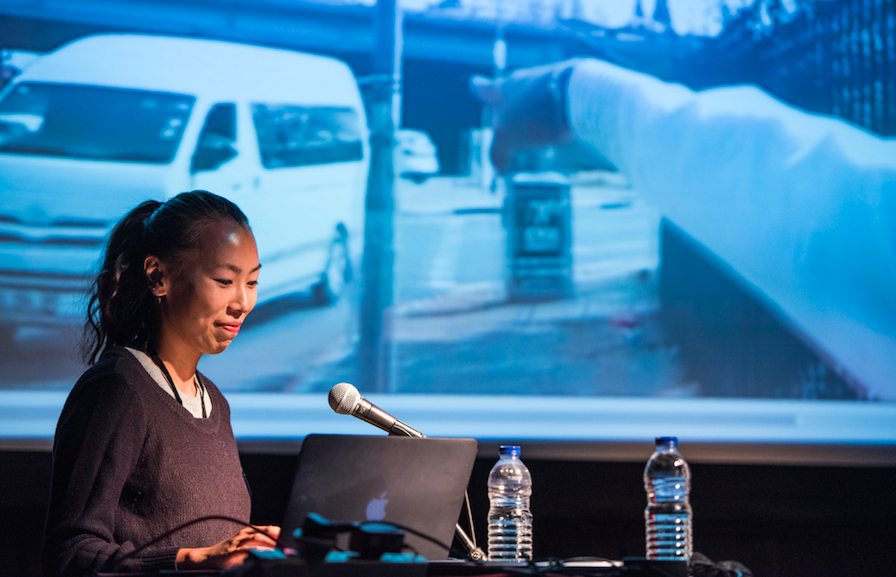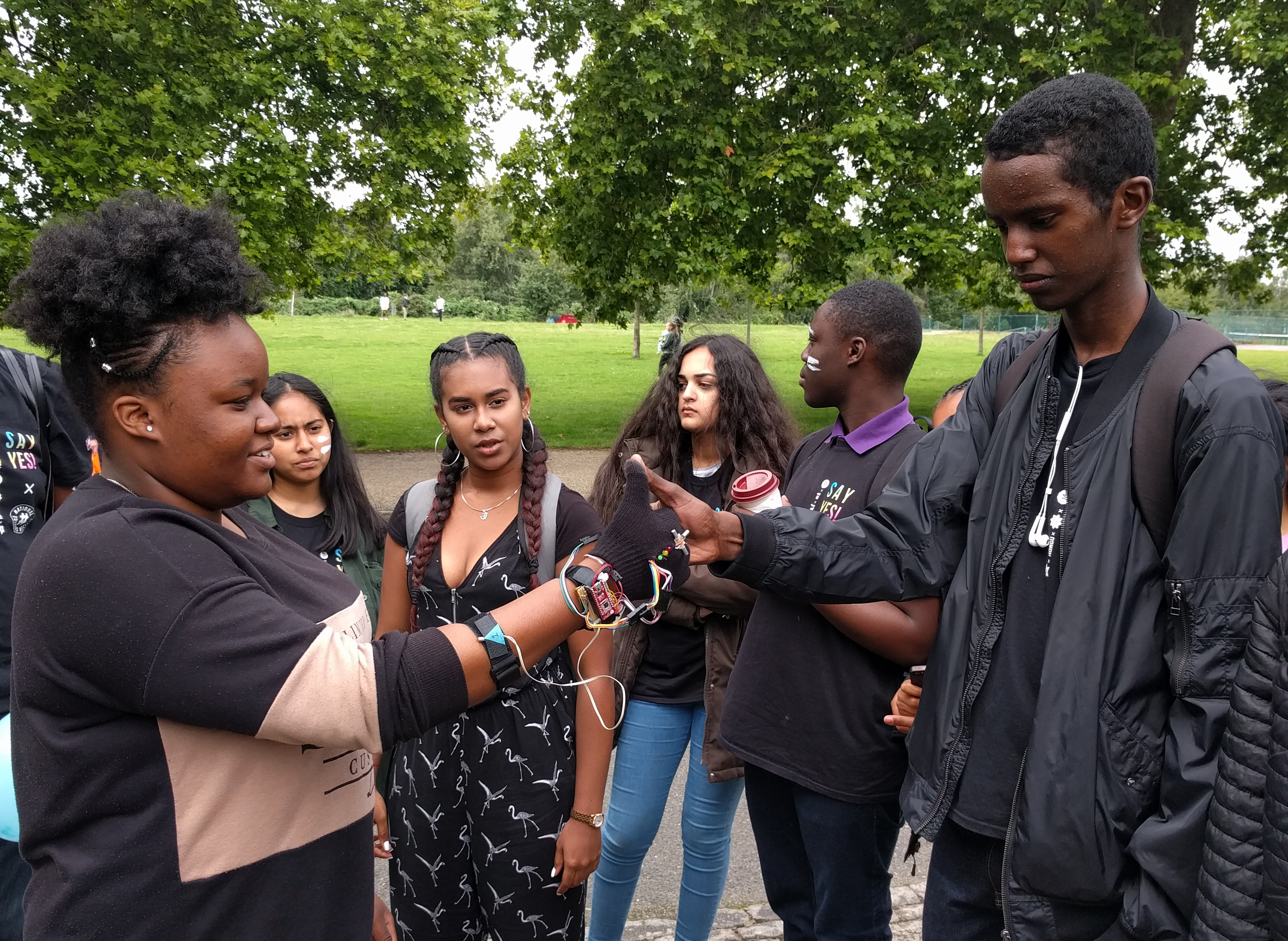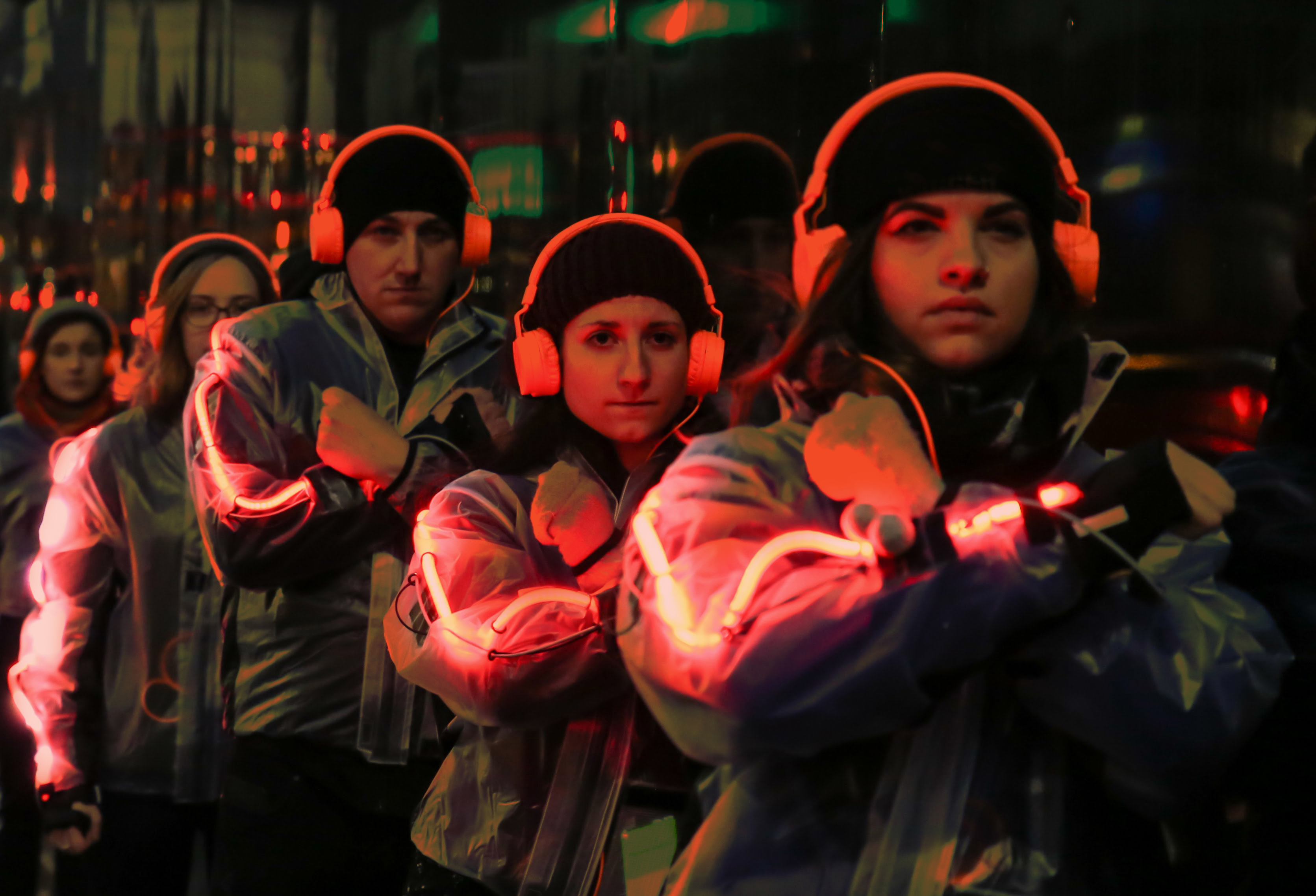How Will Wearables Shape Our World?
Interview by Cayleigh Bright
If fitness trackers are all that come to mind when you think of wearable tech, prepare to learn a thing or two. Ling Tan is a Senior Designer at Umbrellium, a design studio that builds urban technologies that support citizen empowerment and high-impact engagement in cities. A residency in Johannesburg showed the UK-based designer just how wearables could be used to understand the unique concerns of local citizens, and what they had in common with communities worldwide.
When did you first begin working with code, and how do you currently use it?
I first taught myself basic coding skills using Arduino about five or six years ago when I was doing my research masters degree in UCL, Bartlett. Back then, coding for me was more of a need than an interest, as I realised I need to learn it in order to advance my research in wearable technology. I then picked up a range of coding languages and skills, such as Javascript, over the years with my own projects and work in Umbrellium. All of the projects I work on now involve coding to various degree, ranging from using Arduino to control simple to complex electronic setups, to backend system using Node.js.

We first became aware of your work through the Fak’ugesi residency, where you explored the notion of a smart city, and how that environment would interact with wearable tech. Could you tell us a little more about that project?
I was interested in the use of “social” wearable technology as a tool for a community to collectively record their relationship with the city. The residency project, Fak’ugesi Social Wearables, explores how residents of Johannesburg perceive their experience of safety in the city through the use of wearable technology as a tool to record their subjective perception. A series of workshops were hosted over a period of 1 month during which participants and members of the public engaged in debates and discussions on what concerns them about Braamfontein, Johannesburg. The topic of safety in the city came about from participants’ own experience and in turn became a driving factor for the design and function of the wearable devices. A series of wearable harnesses were designed collectively with participants, which I then built from scratch. Each wearable uses intuitive body gestures (gestures that relates to safety, for example, clenching your fist to signal fear) to enable a wearer to actively record their own perception of safety while walking in the city. Participants wore them for a period of one week to track their perception of safety in the city, the aim is to collect a large body of data to pass on to government authority as a quality of life survey.

What’s the most surprising insight that your research has shown you?
I recently finished a large-scale participatory project, SUPERGESTURES where I worked with 50 young people to explore their relationship with smart city in Manchester, UK (home to the UK’s first smart city demonstrator, CityVerve). The project uses wearable technology to help question how much tangible impact smart city technology can have on future generations and culminated in a large-scale outdoor multimedia performance through which people expressed their relationship to the city and their visions for the future with body gestures performed using wearable technology. One of the insights I gathered from this project was that young people were generally more concerned with issues such as rising transportation fees, homelessness and lack of maintenance on the streets. These are oftentimes issues that cannot be solved with technology, and instead need collective action to made a change legislatively.

Why is wearable tech so valuable in what you do – and to all of us?
I believe that the use of wearable technology has not been cracked and there is so much more potential to it than merely the passive biometric-sensing commercial wearables that you see in the market right now. For example, there is potential for it to be social, to enable wearers to actively connect to each other (not on a competitive basis like those in sports wearables such as Fitbit), and also for people to be actively connected to each other in a community, in order to collectively take action on a common goal. Wearable technology interacts with people individually and is attached to a human body for a prolonged period of time, so its pervasiveness means that it can potentially mediate our reality much more than a mobile phone does right now. With that, I think we should all be very concerned with the direction that such technology is going right now, and that we should all be vigilant and question who and why companies are designing specific types of technology.
Could you tell us a little about WearON, and why this project is important?
As designers ourselves, we at Umbrellium have experienced the pain of designing and deploying wearable products. We have had to hack hardware, debug connectivity, get sensors talking to phones and ensure reliable data upload to the web. Once wearable data is online, there is no obvious tool for making sense of it or for building applications on top of it. You can buy the Smart Citizen kit to monitor the environment of your home and build applications on top of the data, but nothing similar exists for wearable designers to capture and make use of data generated by body-oriented projects quickly and simply. We created WearON as a prototyping platform for wearable designers to connect their devices quickly and simply to a smartphone, to the web and to each other. There is a key focus on the notion of ‘social wearables’, the platform combined local environmental with contextual data to support designers in developing projects and products that are not just based on individual one-to-one connectivity, monitoring, and control, but rather on ‘many-to-many’, ad-hoc and spontaneous connections and interactions.
What’s the next step in the development of wearables?
Hopefully somewhere with a stronger focus on designing for people to become socially connected with one another, to connect within communities, and to create opportunities for citizens to affect a change in their city.
What’s one tech tool that you couldn’t go without?
This low tech sci-fi looking ‘blink time’ watch that I got from the Manchester Museum of Science and Industry gift shop which cost only £8. I love that I have to actively press a button on the watch in order to see the time: I thought it reverses our expectation of time-telling.